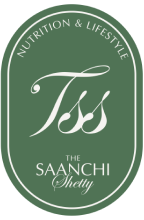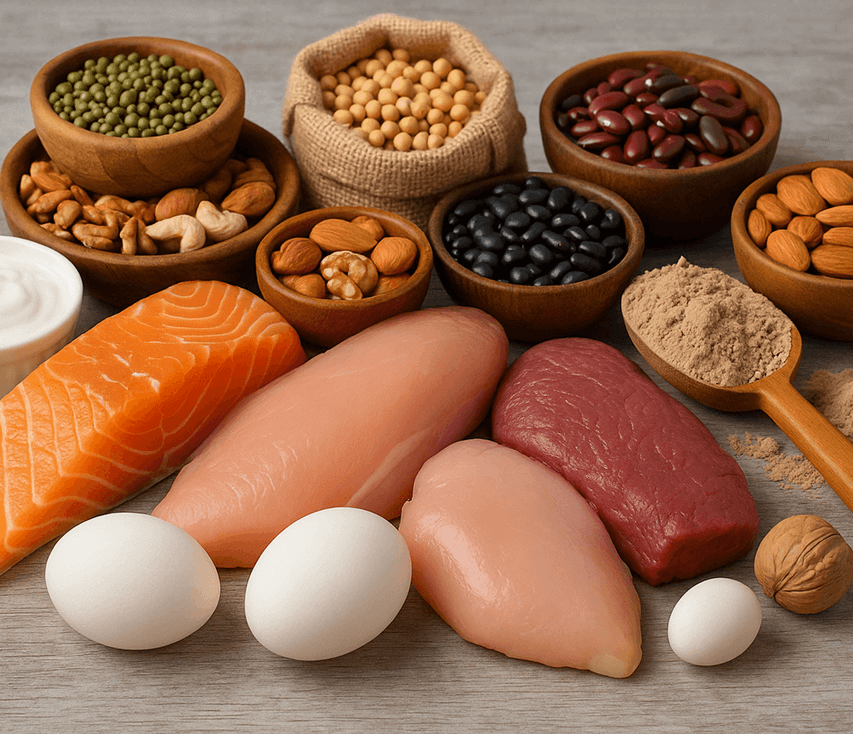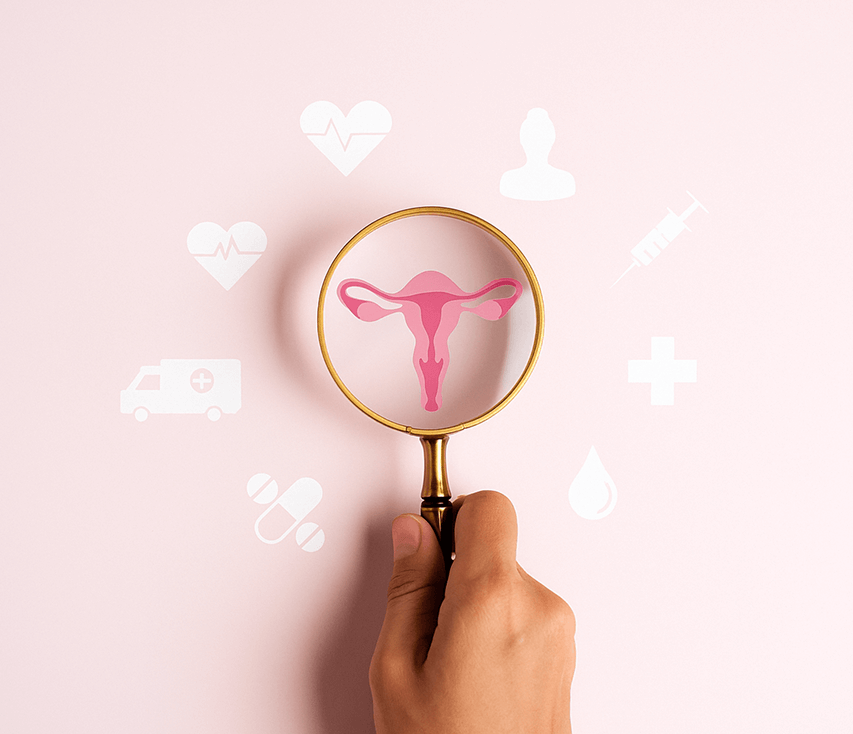In the world of trendy diets and superfoods, one essential nutrient is often sidelined—protein. While most people obsess over carbs and fats, protein quietly does the heavy lifting when it comes to energy, satiety, metabolism, and muscle health.
If your day starts with coffee and toast, lunch is a light salad, and you find yourself crashing by 4 PM with cravings you can’t ignore—your body might be sending you a message. You may not be eating enough protein.
And no, protein isn’t just for athletes or gym lovers. It’s a daily must for everyone—from growing teens and working professionals to aging adults. Let’s unpack why most people fall short on protein, what that means for your body, and how you can close this crucial nutritional gap.
Why Protein Is Non-Negotiable
Protein is involved in nearly every function in the human body. It’s made up of amino acids, often referred to as the “building blocks of life.” Here’s why this nutrient is essential:
- Repairs and builds muscle tissue
- Supports enzyme and hormone function
- Boosts metabolism
- Maintains skin, hair, and nail health
- Strengthens the immune system
- Keeps you full and satisfied for longer
- Helps balance blood sugar levels
When you don’t get enough, your body begins to break down muscle for fuel. This can lead to fatigue, frequent cravings, slower metabolism, poor recovery, and long-term issues like muscle loss and weakened immunity.
Protein & Muscle Mass: More Than Just Strength
Muscle mass isn’t just about looking fit; it’s crucial for maintaining good health as we age. Having a higher muscle-to-fat ratio is directly linked to improved metabolic function. This means your body becomes more efficient at burning calories, regulating blood sugar levels, and processing fats. Muscle tissue helps to stabilize blood sugar by improving insulin sensitivity—meaning your body uses insulin more effectively, reducing the risk of conditions like type 2 diabetes.
Additionally, muscle mass supports strong bones, as muscles place stress on bones, which encourages bone density and reduces the risk of osteoporosis, particularly as estrogen levels decrease with age. Muscle also plays a protective role by improving balance and reducing the risk of falls or injuries, especially in older adults. As we get older, we naturally lose muscle mass (a process known as sarcopenia), so maintaining muscle through proper nutrition and strength training is key to staying strong, mobile, and healthy throughout life.
Maintaining muscle mass is, therefore, not just for performance—it’s essential for your metabolism, bone health, and overall aging process.
Protein supports this by providing the raw material needed to preserve and grow lean muscle tissue. And if you’re active or doing strength training, the demand for quality protein goes up.
This is where BCAAs (Branched-Chain Amino Acids)—leucine, isoleucine, and valine—become especially important. These essential amino acids are directly involved in muscle repair, reducing post-workout soreness, preventing muscle breakdown, and enhancing performance. Including BCAA-rich protein sources like eggs, dairy, meat, fish, and legumes (or supplementing if needed) can significantly support muscle health and energy levels.
Are You Protein Deficient? Common Signs to Watch Out For
Not sure if you’re hitting your daily protein targets? There are several subtle signs your body might be sending you. You may feel tired even after a good night’s sleep, or find yourself getting hungry shortly after meals. If you’ve been struggling to maintain muscle tone or strength, or if your hair, nails, and skin seem dull or weaker than usual, it could be linked to a protein deficiency. Frequent colds or infections, trouble focusing, and slower recovery after workouts are also common indicators. These symptoms often develop gradually, but over time, they can significantly impact your overall well-being if protein isn’t a consistent part of your diet.
How Much Protein Do You Really Need?
The Recommended Dietary Allowance (RDA) for protein is 0.8 grams per kilogram of body weight, but it’s important to note that this is the bare minimum required to avoid deficiency—not necessarily enough to support optimal health. Your actual protein needs can vary depending on factors like your age, activity level, and lifestyle. For those who lead a sedentary lifestyle, 0.8g per kg may be sufficient, but moderately active individuals should aim for around 1.2g per kg, while highly active people or those engaging in strength training benefit from 1.6 to 2.0g per kg of body weight. For instance, someone who weighs 70 kg (154 lbs) and exercises regularly should be consuming anywhere between 84 to 140 grams of protein each day to support muscle repair, energy, and overall health.
Not All Proteins Are Equal: Animal vs. Plant-Based
Protein sources matter. Some provide a full spectrum of essential amino acids (complete proteins), while others need to be paired for full benefits.
Animal-Based Protein (Complete Proteins):
- Eggs
- Chicken, turkey, beef, fish
- Dairy (milk, yogurt, paneer, cheese)
- Whey protein
Plant-Based Protein (Mostly Incomplete):
- Lentils, chickpeas, kidney beans
- Tofu, tempeh, soy milk
- Nuts and seeds
- Quinoa, buckwheat, amaranth
- Pea or rice-based protein powders
Tip: Combine different plant-based sources (like rice and dal or hummus and whole-grain pita) to get all essential amino acids.
The Role of Protein in Weight Management
Here’s where it gets interesting—protein doesn’t just help you feel full, it actually boosts your metabolism too.
- Increases satiety so you eat fewer empty calories
- Supports muscle mass, which burns more calories at rest
- Reduces late-night cravings and blood sugar crashes
- Has a high thermic effect, meaning it takes more energy to digest
If you’re trying to lose weight or prevent unwanted weight gain, protein is your best friend.
Protein Needs Across Life Stages
Protein requirements don’t stay static—they increase with age, stress, and activity.
- Teens and young adults need extra protein for growth
- Pregnant or lactating women need more for fetal and infant development
- People over 40 should increase protein to prevent muscle loss (sarcopenia)
- Athletes or those with intense routines need higher intake for recovery and strength
Bridging the Gap: How to Eat More Protein Without Overthinking
Meeting your daily protein goals doesn’t have to be hard or expensive—it just takes a few smart swaps and additions.
Start your day with protein-rich breakfasts like Greek yogurt with berries and flaxseeds, moong dal chilla with mint chutney, scrambled eggs with veggies on multigrain toast, or a smoothie made with banana, oats, and nut butter.
For lunch and dinner, you can boost your protein intake by adding grilled paneer, tofu, eggs, or chicken to salads, swapping white rice with quinoa or millets and pairing it with dal, including a bowl of curd or buttermilk with your meals, or opting for chickpea or bean-based curries and stews.
When it comes to snacking, reach for boiled eggs, paneer cubes, mixed nuts, roasted seeds, hummus with veggie sticks, low-sugar protein bars, or snacks like chana chaat and sprouted moong salad. And if you’re constantly on the go, adding a scoop of whey, soy, or pea protein to a smoothie or even just plain water can be a convenient way to bridge any nutritional gaps—especially post-workout or on days when you’re skipping meals.
Final Thoughts: Protein First, Everything Else Follows
Despite being such a critical nutrient, protein often flies under the radar. From managing your weight and boosting energy to preserving lean muscle and balancing hormones—adequate protein intake is foundational to your health.
Luckily, bridging the protein gap doesn’t require fancy supplements or restrictive diets. It’s about conscious choices, a little planning, and making sure every meal counts.
Your body isn’t just surviving—it’s working hard for you every day. Give it the nourishment it deserves.
Need help building a protein-rich meal plan that suits your lifestyle and goals? Explore our Nutrition Programs or 1:1 Consultations to get started




